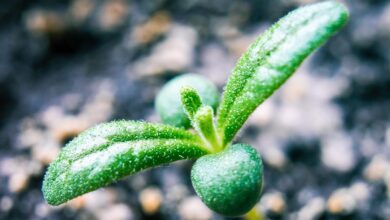
5 Health Aspects of Green Buildings
- #1 - They provide us with more natural light
- #2 - They are energy-efficient
- #3 - They’re built using sustainable materials
- #4 - They ensure better ventilation and better air quality
- #5 - They incorporate nature into their design
Our lifestyle has significantly changed in the last couple of decades.
The rise of technology and various other factors that came with modern age have us spending more time indoors.
However, what many of us don’t know is that the air we breathe indoors maybe even more polluted than the outdoor air, and it is usually because of improper ventilation and the use of furnishings and products that release toxic chemicals and VOCs into the air.
Although these issues can be fixed, this has influenced some individuals to look for ways to optimize a building for the health of its occupants.
That is how the notion of green buildings started to emerge, and today, we’re witnessing a rise of the sustainable architecture on a global scale.
In this article, we’re taking a look into the health aspects of green buildings and how they’re different from traditional constructions:
#1 – They provide us with more natural light
An important design element, lighting plays a vital role in how we perceive the space, affecting our mood, emotions, and performance.
Lighting (or lack thereof) often presents a problem to some occupants who live or work in older, conventional buildings.
Lighting has a big impact on the occupants’ productivity, as well as general happiness levels, which is why more focus is being put on lighting design.
As a response, designers are starting to take note and trying to incorporate as much lighting into the design as possible, relying on both natural and artificial sources of lighting to illuminate spaces.
Different layers of lighting are being introduced, and more attention is being given to circadian rhythms of the human body which are used as a deciding factor when selecting lighting.
#2 – They are energy-efficient
While energy consumption continues to grow on a global scale, designers and architects are paying more attention to green building practices.
Striving to reduce the consumption of energy, they are looking for ways to improve insulation that will prevent the heat from escaping the building, and they are also installing renewable energy sources.
Newer, greener buildings are being built with an energy-intelligent design in mind and help conserve natural resources by using less water and energy compared to traditional buildings.
Their location is carefully chosen so that they leave little impact on the environment. They often have access to public transportation which helps the occupants reduce their carbon footprint since they don’t need to use their vehicles to commute.
#3 – They’re built using sustainable materials
Another important aspect of green buildings is that they’re built using sustainable and recycled materials.
Wood, copper, and stone are reclaimed after demolition and then incorporated into the design of new construction, thus helping reduce construction waste and save those materials from going to landfills.
Other than recycled materials, sustainable materials such as bamboo are often used for flooring in new buildings, and they’re perfect for high-traffic areas such as offices.
The demand for sustainable architecture is growing in countries like Australia, especially in populous cities such as Brisbane. Developers and consumers are starting to see the impact sustainable building has on the environment, with many of them turning to experienced Brisbane architect to deliver a sustainable design solution.
By investing in energy-efficient, sustainable building technologies, they help reduce the carbon footprint of the building by up to 40%.
#4 – They ensure better ventilation and better air quality
The fact that green buildings are built using non-toxic materials ensures good indoor air quality.
However, under-ventilating is another issue that is often experienced by occupants who work or live in older buildings.
To avoid this issue, designers of green buildings strive to ensure optimal levels of ventilation that will help dissipate the pollutants and keep the air clean.
Effective air filtration in green buildings also helps improve air quality as it regulates the indoor levels of moisture and rids the indoor spaces of harmful pollutants, toxins, chemicals, and mold.
#5 – They incorporate nature into their design
Designers of green buildings often integrate nature into their design, and that is easily done by creating green walls.
Plants absorb chemicals and toxins from the air and use them to produce oxygen, which makes green walls the perfect addition to any building, especially in metropolitan regions and areas with higher traffic.
The vertically supported vegetation offers a beautiful view, and it also acts as acoustical insulation, absorbing the noise from the outside and reducing its transmission. The greenery helps regulate the level of moisture present in the air, thus balancing natural humidity and improving air quality.
What’s more, green walls also absorb the heat and offer cooling effect, thus reducing the need for air conditioning and cutting energy costs.
It’s evident that green building and sustainable architecture bring a wide range of benefits to the environment.
They improve the way buildings use natural resources and help reduce the negative impact that the building has on the environment as well as human health. With that in mind, we can expect to see more of them in the future.






